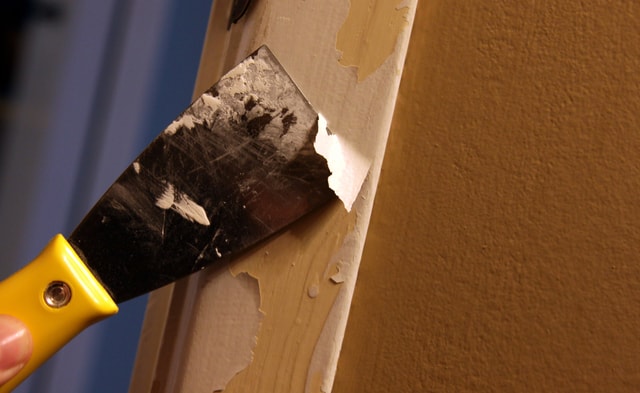Painted brick surfaces can undergo continued spoilage in mortar joints. This takes place when there is moisture in between the brick, paint, and mortar. The outer part of a brick is more permeable, and therefore joints are prone to several stresses. Removal of paint becomes a difficult task to undertake without interfering with the outer part, of for example a brick chimney.
In most cases, many homeowners opt to do the work all alone rather than pay someone to do it for them. It is not advisable though, because the right tools, materials, and expertise are needed so as the job can be done correctly without any damages to humans.
Preparing the area of work
Paint removal can be effortless, cleaning up the remains can be very challenging though. Segments of paint should not spill over the floor or ground adjacent to your chimney or brick wall, a lot of plastic protection and groundsheet is needed to keep the paint drops and other debris in a central place that can be easy to clean.
A contractor doing the job should ensure that any areas that unpainted are quarantined and taped off. Before paint removal materials are applied, workers should do away with flaking or loose paint. The most used equipment is a scraper or a putty knife.
Application of Paint Remover
The best way to clear away paint from a brick chimney is by use of an adherent paint removing compound. The moment paint remover gets into contact with the brick; it immediately develops a chemical reaction which in turn forces the paint to produce its tight bond to the brick. This process does not damage the brick and mortar’s surface which is delicate.
The adherent paint removal sheets sheath the whole brick surface laying one over the other for about 24 hours. The materials are scaled off by use of a putty knife. A steel brush should be used whenever there are stubborn pieces in the brick.
Using Pressure to Wash
After most of the paint has is removed by hand, the dirt is safely disposed of. Use of a power washer can clean the surface of the brick hence no paint leftover. At some point, a nontoxic detergent can be applied. The surface should be left to dry for about three days after which disintegrated mortar joints, and spoiled bricks get fixed.




